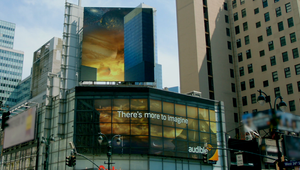
Fold7 Launches World First Report on the Commercial Impact of Brand Generosity

Consumers are more likely to buy from brands with generosity at the heart of how they interact with their customers, according to The Generosity Impact Report – a pioneering new study published by Fold7 this week.
In a post purpose era, with many organisations pulling back from purpose-led propositions to refocus on specific product and service benefits, Fold7 have examined the power of generosity, whether it can impact brand performance and the differences between different demographics and sectors.
The report combines several pieces of research, including input from behavioural scientist Richard Shotton (author of The Choice Factory), and the findings from a nationally represented survey of 2,000 people commissioned by Fold7 and conducted by YouGov.

The findings show that generosity plays an important role in brand building and when executed strategically, will impact the bottom line.
In order to deliver it effectively in the post-purpose era when consumer scepticism is high, brands must apply a deep understanding and a nuanced approach for how they treat different customers – with particular attention paid to age. Generosity works, but a one size fits all generosity strategy does not.
Overall, people most saw generosity as honesty with customers, positive internal behaviour and rewarding loyalty. Least important were entertaining content, access to events and personalisation.
When asked how they would respond to brands who acted according to their definitions of generosity, consideration to purchase went up by 7-11% depending on age. If brands can evidence generosity in ways their audience value, there is a clear advantage to be gained.
The survey revealed that understanding how needs and expectations change according to age is key to effectively delivering generosity for consumers. When trying to appeal to younger audiences, brand ethics are of particular importance. To attract and retain older consumers, experience is everything – from customer service to loyalty rewards.
Perceptions of generosity also vary depending on the sector in question. Although a common theme across all seven industries investigated (banking, airlines, quick service restaurants, fitness, spirits, snacks and tech) was an untapped opportunity for brands to deliver more in terms of generosity. In nearly all sectors, consumers felt there wasn’t a single brand that was truly doing more for them.
The Generosity Impact Report shows that despite the shift away from purpose, consumers still want more than ‘just’ products from brands. There is a clear opportunity for brands to win through understanding the different generosity levers that influence purchasing behaviour.
Yelena Gaufman, chief strategy officer, at Fold7, said, “At Fold7, we think that consumers want more from brands than product and service benefits. We know that people engage with brands that feel human, authentically pursue values that align with theirs, and embody a generous spirit. And we believe that to make the difference, generosity should lie at the very heart of the brand offering.
“For us, generosity is a core value, and we wholeheartedly believe that it is good for business. It makes people happy. It reduces stress. It inspires people to do their best, for themselves and for each other. The important question for brands is not whether or not to be generous but how best to be so. This is where The Generosity Impact Report comes in.”
The Generosity Impact Report combines several pieces of research. This includes the results of a nationally representative YouGov survey of 2,000 people, commissioned by Fold7 to investigate the dimensions of generosity in everyday consumer language and understand the difference in perceptions according to demographic and sector dynamics.
The agency also undertook a deep dive into existing academic research on people’s perception of generosity and how it makes them react. Fold7 also consulted behavioural science expert Richard Shotton, author of the bestselling book, The Choice Factory and 2023’s critically acclaimed, The Illusion of Choice, to add another dimension to the report.















